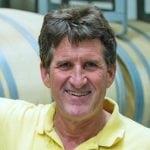
Home » Winemakers work with earth’s energy to cultivate grapes
Winemakers work with earth’s energy to cultivate grapes

July 16, 2018
By David Forsyth
Plants are the ultimate energy-conversion machine, taking energy from sunlight along with carbon dioxide to produce plant biomass and oxygen. Wine grapes, like many plants, will store some of this energy as sugar in the fruit.
The grapevine using the captured energy, along with water, nitrogen and other nutrients from the soil and carbon dioxide from the air, will produce biomass through photosynthesis. This would be the leaves, trunk and cordon (limbs) and fruit. The fruit contains the seeds in a delectable package to entice birds and other animals to eat them and scatter those seeds near and far. Fruit production is the replication of the species and the plants reason to be.
The grape — with its sugar, flavor, aromas, acid and tannin — is the perfect mixture to produce wine. But we need another one of nature’s energy conversions maestros to produce wine. This is the unicellular yeast, a fungus, which in the absence of oxygen and through the process of fermentation, will convert the sugar to ethanol through a number of metabolic steps releasing energy and producing yeast biomass and replicating.
The ethanol and carbon dioxide produced are byproducts of the fermentation, along with a number of flavor and aromatic compounds. In the wine fermenter, we must cool the jackets to pull away the heat from the energy being released by the yeast, otherwise the tanks of fermenting juice will get over 100 degrees and kill the yeast.
As you can see, nature has a pretty good process for producing and fermenting fruit into wine. The basic role of the winemaker is to get all the components together in one place to allow the yeast to convert the grape juice to wine.
We just passed through the summer solstice and there is a lot going on in the vineyards. The rapidly growing shoots that carry the developing clusters need attention to produce quality fruit. There are a number of vineyard practices taking place. Shoot thinning is done early to remove excess shoots which have pushed from the cordon (the vine’s horizontal limbs). Removing these shoots opens the canopy to more air and light, reduces humidity and allows for better spray penetration and dappled light to the grape cluster.
Sprays are applied frequently early in the growing season to prevent mildew, which unprevented, will grow on the leaves and berries, ruining fruit. Noxious insect populations also are monitored and will be sprayed if populations get to a point where the vine or the fruit may be damaged. Deficit irrigation also is being employed during this time of year, with vines receiving less than the amount of water that they are requiring and using in their everyday growth.
Growers want to apply just enough water to keep the vines growing. Excess watering leads to a large canopy, which in turn reduces air movement and light penetration. Later in the growing season, more water can be applied to the vine to keep it healthy and fully develop the fruit.
July is a good time to get a crop estimate to understand how much fruit is hanging out there, usually related as tons per acre. Carrying an excessively large crop will lead to delayed ripening and poor flavor and color development. As the grape berries grow, they increase in size dramatically until they are near verasion, the stage when the berries begin to soften and change color from pea green to translucent yellow, or green if a white or red if a red variety.
At this point, the berries pause in their growth for a couple of weeks. This is called lag phase. This allows a window for the grower to go out and harvest grapes from several vines in each block. The grower counts the clusters and weighs them, determining an average cluster weight. The lag phase weights are correlated to harvest cluster weights and this correlation is known from previous year’s data. Using this sample vine data, the grower can calculate the pounds per vine (or tons per acre). If the crop exceeds optimum target yield for that block crop, thinning will need to be done. Vineyard workers then will go out and remove a certain number of clusters per vine by hand to ensure proper ripening.
Weather and attention to vineyard operations during the active summer growing months are critical and will define the quality of grapes that will come off of a vineyard. Every growing season is different and how the grower and winemaker respond to that will determine the final character of the wines produced.
From bud break until harvest, we work with the energy of the earth and sky. Harvest ends with the first frost, then winter waits for spring to begin the cycle again.
David Forsyth is the winemaker and general manager of Four Feathers Wine Estates in Prosser.
Local News Energy
KEYWORDS july 2018






